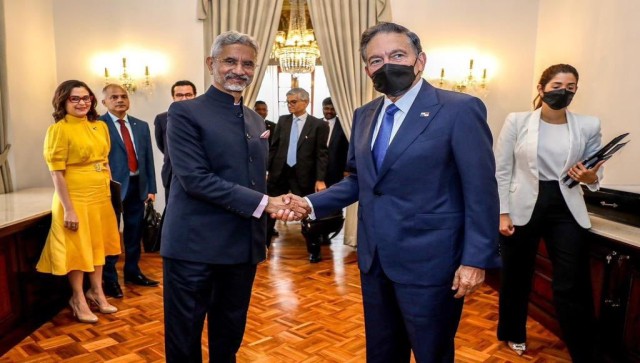At the time of writing this article, S Jaishankar, the Minister for External Affairs, has been making his way across Latin America’s four nations, Guyana, Panama, Colombia, and the Dominican Republic. With a keen focus on boosting India’s pharma, infrastructure, and mining capabilities, Jaishankar’s visit holds significant importance for India’s expanding global footprint. The Confederation of Indian Industries (CII) is also lending its support to the minister’s visit by organising parallel delegates in coordination with the MEA. The visit of these four nations, once ruled by colonial powers, holds immense strategic importance for India. Jaishankar’s visit marks the first time an Indian foreign minister has made a bilateral visit to these countries. Before his tenure, MoS for External Affairs, a junior foreign minister, monitored the Latin American region. Jaishankar’s enthusiasm for dealing with South America is palpable, with economic relevance, strategic positioning, and energy diversification at the core of his mission. India and Latin America currently boast a $50-billion trade, however, which pales compared to China’s $450 billion trade with the LAC region. Nevertheless, it is important to note that this number for China was a mere $12 billion two decades ago, indicating the potential for growth in India’s trade and investment in the region. China’s investment in the area, particularly in the mining sector, has given it a significant advantage. This area is full of gold, silver, iron ore, copper, and, most importantly, Lithium. With Guyana’s recent emergence as one of the newest petroleum-producing countries, with oil reserves of 15 billion barrels, India’s interest in the region becomes even more critical. India imports 15 per cent of its crude oil from the Latin-America and Caribbean region. Still, successfully importing oil from Guyana would be a significant diplomatic victory for India, especially given the current political climate with the sanctions on Venezuela and Iran, in addition to increasing reliance on Middle Eastern oil. Beyond its mining and petroleum reserves, Latin America offers India potential agricultural land. With almost five times the area of India and half the population, this region can provide India with an opportunity to address its reliance on imports of essential commodities such as pulses. Jaishankar’s visit to Latin America and Caribbeans holds immense strategic importance for India, particularly given China’s increasing presence and investment in the region. However, connectivity is a major obstacle. All talks about trade in commodities are facades because of difficulties encountered in the travelling distance. China has the upper hand in this because of its influence over the Panama Canal’s shipping lines. Regional politics is also one of the obstacles; Brazil and India are a part of G4 and want an expansion of the UN Security Council, but Argentina is part of the Coffee Club, which opposes the move. There are multiple groupings of countries in the region, and preferring some over others to engage with will be challenging. The “Indian Elephant” has moved forward for the journey to the “Pacific Pumas”, much to balance the influence of the Dragon. The strength of the Elephant is not in the question but the speed, definitely, is. The writer is an independent columnist who writes on international relations, and socio-political affairs. Views expressed are personal. Read all the Latest News , Trending News , Cricket News , Bollywood News , India News and Entertainment News here. Follow us on Facebook, Twitter and Instagram.
The External Affairs Minister’s visit marks the first time an Indian foreign minister has made a bilateral visit to these four Latin American countries, while China has an advantage of being an early bird
Advertisement
End of Article


)

)
)
)
)
)
)
)
)



